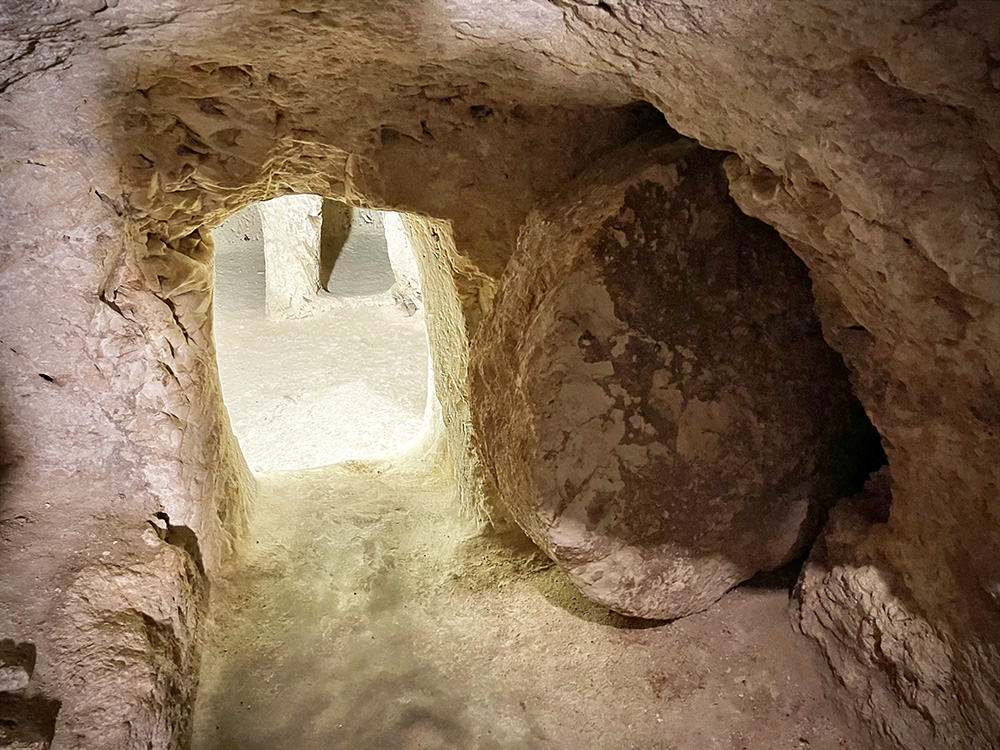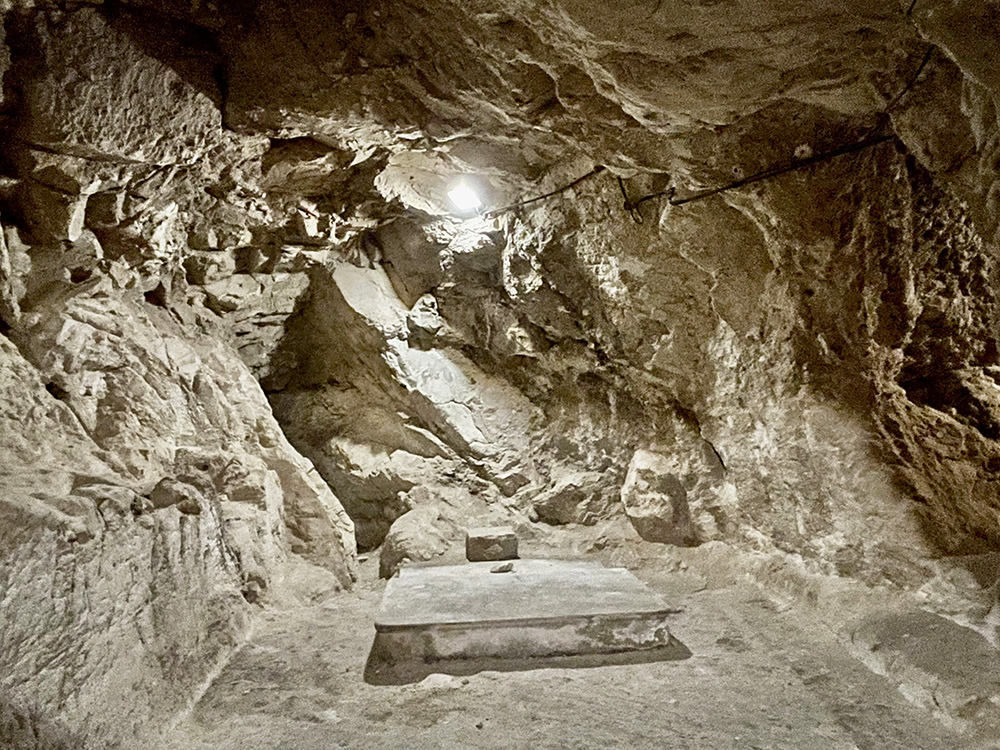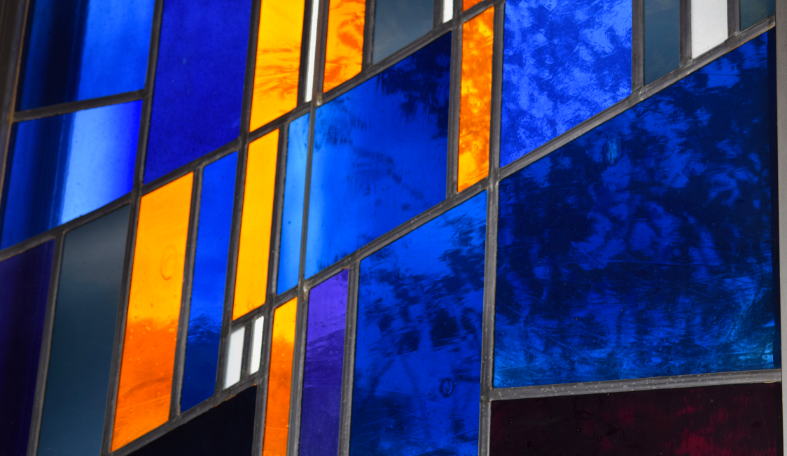Breathtaking Basilicas, magnificent Mosques, awe-inspiring art and spectacular sites representing the Abrahamic faiths. It can be overwhelming to the point that the majestic can almost seem the mundane. This is the spot thought to be where Mary received the Visitation, where Mary and Elizabeth, both laden with child, met, where Jesus was laid in a manger, where He was crucified and buried… The Cathedrals, Churches and sites of remembrance are as monumental and impressive as you would imagine.
Then we went to Nazareth.
After a day of visits to Banias/Caesarea Philippi, a stop at the site of the Beatitudes, a picnic lunch by the Sea of Galilee followed by a Eucharist right there on the shores (one I will never forget!), we returned weary from the day to the Sisters of Nazareth Guest House where we were staying. After dinner, we were to gather for one more archaeological visit below the Convent. We were in for a stunning surprise.
For historical reference, in 1880 the Sisters purchased the site, and at the time were concerned that they were paying more than the land was worth. They were told it was expensive because it was where the “righteous man” was buried. Over the following years, the Sisters would excavate below the property. They eventually discovered Crusader and Byzantine ruins and artifacts, and discovered a spring, a cave and a house dating to the 1st century. They also found a tomb. What was unusual was that the tomb was cut in the stone next to and below the house. In Jewish tradition, the dead were considered unclean. The exceptions to burials so close to where people lived were typically for royalty, high religious figures and “righteous men.”
A 7th century pilgrim account known as the De Locus Sanctis, written by Adomàn of Iona, described two large churches on this ground. One identifiable as the Church of the Annunciation, just across the street today from the Sister’s Convent. He described the second church as one built over vaults that contained two tombs and between these two tombs, the house that Jesus grew up in. Was this the tomb of Joseph? He was certainly a “righteous man.” And, was this the actual home of Jesus? Of course, it’s impossible to say, but during the Byzantine period, just a few hundred years after the time of Jesus, local tradition held this memory. As I (all of us) walked among these extraordinary excavations, I personally felt the presence of Jesus more so than anywhere else.
Nazareth at that time was a small village. So small, that it would be very unlikely that all who lived there were not known to each other. Whether or not it was Jesus’ home may never be known, but certainly the child and young man played around and visited the homes in His village. So there were no paintings, mosaics, candles, vaulted structures or stained glass windows. Just a cave, a tomb, a humble home of stone and a reminder that before Jesus was Jesus, he was a boy growing into a man. I loved that. –Joe Paulini


